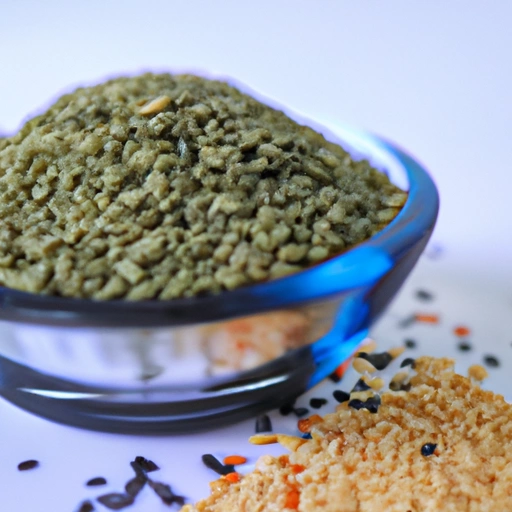Sesame
Description

Sesame is a flowering plant in the genus Sesamum, also known as benne. Sesame seeds are highly valued for their oil-rich composition and are one of the oldest oilseed crops known, domesticated well over 3000 years ago. They come in a variety of colors, depending upon the cultivar type, including white, black, brown, and red.
Common uses
Sesame seeds are commonly used as a flavor enhancer, topping, and ingredient in various dishes. They have a nutty taste and are used to produce sesame oil, a cooking oil that is also used as a flavor enhancer in many Asian cuisines. Sesame seeds are also often baked into crackers and used in salads, and they are the main ingredient in tahini, a paste used in various dishes, including hummus.
Nutritional value
Calories
A 1 ounce (28 grams/approximately 3 tablespoons) serving of sesame seeds contains approximately 160 calories.
Protein
That same serving size has about 5 grams (0.18 oz) of protein, an essential component for building and repairing muscles.
Fat
Sesame seeds are rich in healthy fats, with around 14 grams (0.5 oz) of fat, primarily polyunsaturated and monounsaturated fats.
Carbohydrates
There are about 7 grams (0.25 oz) of carbohydrates in a 1 ounce serving of sesame seeds.
Vitamins
Sesame seeds are a good source of B vitamins, including thiamine (B1), niacin (B3), and folate (B9).
Minerals
They are also rich in minerals such as calcium, iron, magnesium, phosphorus, manganese, copper, and zinc.
Health benefits
Sesame seeds may provide numerous health benefits such as improved heart health due to their lipid-lowering effects, support for bone health with their high calcium content, and potential protection against certain cancers due to their antioxidant properties.
Potential risks
Excessive consumption of sesame seeds may lead to unwanted weight gain due to their high calorie and fat content. Furthermore, sesame seeds are one of the most common allergens, which can cause severe reactions in allergic individuals.
Common recipes
Common recipes that include sesame seeds are sesame chicken, sesame seed buns, and various pastries. Tahini made from sesame seeds is often used in baba ghanoush and halva.
Cooking methods
Sesame seeds can be toasted to enhance their flavor before being added to recipes. They can also be ground into a paste or used to extract sesame oil.
Pairing with other ingredients
Sesame pairs well with ingredients like honey, nuts, chocolate, chicken, and soy sauce, creating a variety of sweet and savory dishes.
Summary
Sesame seeds are a versatile ingredient with a rich history and numerous culinary applications. They provide flavor, texture, and nutritional benefits to a plethora of dishes across various cuisines. However, it is important to be aware of their allergenic potential and calorie density when incorporating them into your diet.